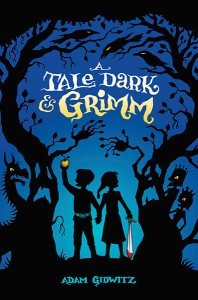
Recently, everywhere you look, fairy tale retellings seem to pop up. Two new television shows based on spins of classic fairy tale stories (“Grimm” and “Once Upon A Time”) and dozens of books, especially in the middle grade and young adult genres, heavily incorporate fairy tales into their stories.
Adam Gidwitz’s “A Tale Dark and Grimm” (Penguin, 2010) takes the characters of Hansel and Gretel and weaves a dozen Grimm fairy tales around them. Hansel and Gretel go from their classic incarnations — silly children who flee from neglectful parents — to well developed interesting characters in this entertaining romp. Gretel is forced to cut off her finger and Hansel turns into a wolf. The entire story can be read together or chapters can be picked at will. It works as both an overarching narrative and a series of short stories.
I enjoyed Gidwitz’s retelling; it’s a cute and creative way to introduce young children to the Grimm fairy tales. (The real ones. Not the fluffy, bastardized Disney versions.) The dark elements are there, written as the Grimms intended as a matter of fact part of the story, that is unavoidable, unhappy and a necessary part of life that can be moved past.
Besides the clever use of Hansel and Gretel – and, perhaps, the gorgeous cover – nothing in particular stands out to me about Gidwitz’s novel. When I was younger, I would have eaten this up and I’ll probably gift it to my younger sister for the holidays. For now, though, “A Tale Dark and Grimm” is lost among the many other fairy tale retellings.
If you’re looking for a cute fairy tale book to buy a pre-teen sibling for the holidays, pick up “A Tale Dark and Grimm.” However, if you’re looking for a fairy tale retelling to read yourself, I prefer books such as Malinda Lo’s “Ash” and Jessica Day George’s “Princess of the Midnight Ball” — though they only focus on one main tale, they seem much more interesting than Gidwitz’s rendition.
